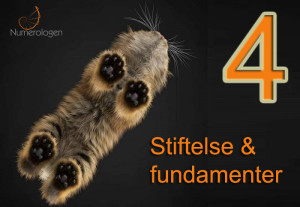finger
f, fingerf or finger command shows the details of the users who are currently logged in a machine.It is useful in a work environment where lot of users are logged into a server and as an...
View Articlegrep
grep grep is a saviour command for unix users. grep can be used to search for patterns in a file or standard input. The pattern search includes finding the line number of the keyword, counting the...
View Articlegzip and tar
gzip and targzip is used to compress files and tar is used to archive a file system. Though these two are different commands ,using them together can accomplish a variety of tasks which seem to...
View Articlehead
head head command is used to view or save a specified portion of the beginning of a file.It does the same work as tail does for the end of the file.Example 1)Head by default displays first 10 lines...
View Articlekill
kill kill is used to send a signal to the process, though the name suggests that it is used only to terminate a process. But, kill helps to terminate a process more often than not. When some process...
View Articlels
lsls command is used to list the contents off the directory.ls writes to standard outputall the information of the files, directories or specifically of the parameters passed to it.You can display...
View Articleman
man Man command internally invokes the sed command to modify the contents of manual pages(documentation written for the commands) and delivers a user readable output.Examples:Example 1: To read...
View Articlemkdir
mkdirmkdir is used to create one or more directories. It can create entire directory structure if needed, or can give required permissions to a directory.Example1)To simply create a directory or a...
View Articlemore
moresometimes, while viewing huge files it would be necessary to view it such that thecontents of the page are displayed as the user examines them and wishes to goto the next one. user can use...
View Articlemv
mv mv command moves or renames files or directories within the same file system or between different file systems. you can also do this interactively when you are moving multiple files.mv is...
View Articlepaste
paste paste is an excellent command for text processing, even though its uses are limited. It can mainly be used to append the contents of files. paste is helpful in creating text files by...
View Articleps
ps ps displays all the processes in a unix system. every command, script or an application is considered as a process in unix. All the processes run until the command or application is completed...
View Articlercp
rcprcp is used to copy or send files or directories between two hosts. It can be used an alternative to ftp and related protocols like sftp, but no password is required to send files unlike ftp.For...
View Articlerm
rmrm is used to remove files or directories. It can be used interactively to ask user input while removing multiple files or the contents of a directory.A great care has to be taken before running...
View Articlersh
rshrsh is used to execute commands on a remote machine. The rsh command executes the command or a program in another host from current working machine without having to login into that remote...
View Articlesed
sedsed or stream editor is an editing utility that modifies lines of a file as specified by an instruction string and writes it to standard output .sed can thus perform the same functions of the...
View Articlesort
sortSort , as the name suggests sorts a file or output of a command. Various options determine the sort criteria which are called as sort keys. If multiple files are passed as parameters to sort...
View Articletail
tail tail command is one of my favourite commands because of its usefulness in viewing the last few lines of a required file and also what is being written into a file ( using –f option).it can also...
View Articlewc
wc wc is a very useful utility which can count lines, characters, words, bytes etc in a plain text fileor standard input. In shell scripts, It helps to store a value for the total lines of a file or...
View Articlewho
whowho gives information regarding the users logged in the system, terminals, the client IP addresses,the start and end times of previous logins and their other command details. It s output is...
View Articlexargs
xargsXargs is a command which can pass arguments from the output of one command to another. It can run multiline commands by passing arguments in a single file. The most important feature is that it...
View ArticleAWK Examples
1) An awk script which performs arithmetic.awk '{x = 3; y = 3;print ($1/7) + ($2 - y)/xz = $2 - 4;print z}' file_1.txt2) awk script to print the filename and its size and finally total size...
View Articlemail/mailx
mail/mailx/ unix mail utilities mail or mailx can be used to send mails to users within a machine, a remote machine or web users using a relay server.Example1)To end mail to user hradmin on the...
View ArticlePL/SQL examples
PL/SQL examples1) A PL/SQL block to check whether value entered by user is present in a listset serveroutput on;declarex char(10);y number(5);z date;BEGINdbms_output.put_line('ENTER A VALUE');x :=...
View ArticlePerl examples
1) A perl program to read a line from standard input and output each words entered using foreach.#!/usr/bin/perl$str1 = <STDIN>;chomp $str1;$count =1;foreach $chr1 (split( //,$str1)){print "\n...
View Article







.jpg)
